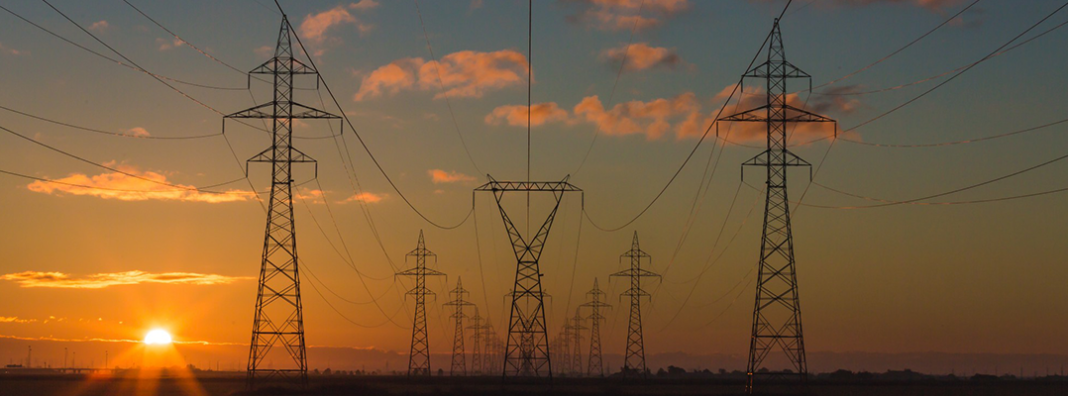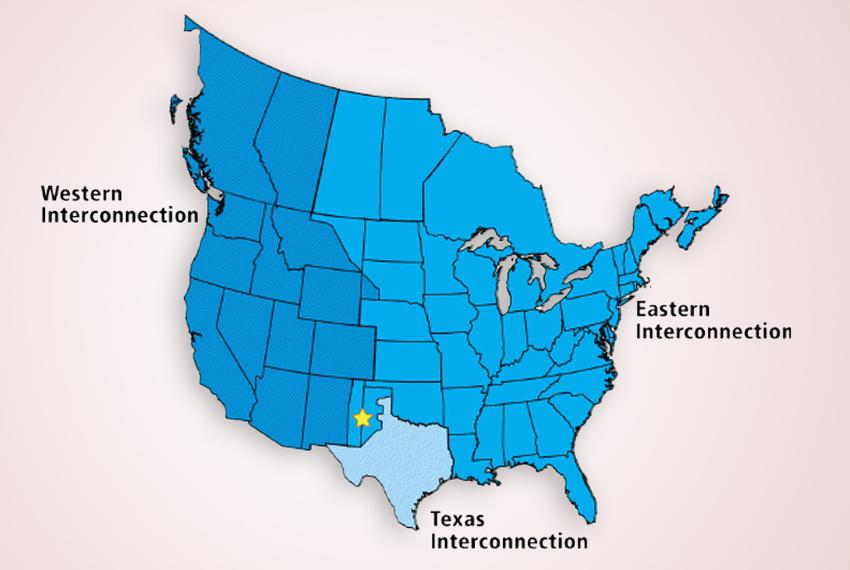
Four million Texans lost power last week as the Lone Star state became as cold as Alaska. The abnormally-low temperatures brought the state to a halt. State authorities advised nearly 13 million Texans to boil their water to ensure it was safe to drink. People huddled in furniture stores and ran cars to stay warm. Texas’s crisis is the latest example of the catastrophic effects of failing to plan for increased climate variability.
Climate change is causing more extreme weather events, and both high and low record temperatures are being broken with increasing frequency. Uncertainty about the climate means that governments can no longer rely on historic average conditions in the same way they have in the past. State and local leaders should be evaluating if their electrical grid, infrastructure, and electricity-generating resources are ready for the added stress that climate change will cause. Once risks are identified, resilience strategies can be developed. Four key features of resilient systems are diversity, redundancy, adaptability, and resistance.
At the federal level, President Biden’s administration ordered heads of agencies to develop climate adaptation plans to deal with these risks. The mandate is part of a larger “whole of government” approach the Biden administration is taking to address climate change. The executive order directs federal managers to describe steps each agency can take to “bolster adaptation and increase resilience to the effects of climate change.” Action plans will describe the agency’s climate vulnerabilities and outline steps to ensure climate-ready buildings and facilities. The plans will also outline strategies to increase energy and water efficiency and protect against supply chain disruptions.
It makes sense to have each agency evaluate its unique vulnerabilities because each has different functions and performs in unique geographic locations. Just as agencies have different functions and needs, states and local governments need to tailor their systems to their specific circumstances. For example, Texas has a power grid that is largely separate from the rest of the country, a unique system that is vulnerable in different ways than states connected to the national grids. While climate change is a global phenomenon, it will impact different regions in different ways. Alaska is losing shoreline thanks to increased winter storms and permafrost thaw, while the Western states are experiencing more severe wildfire seasons due in part to rising temperatures and drier conditions. But the majority of states do not have climate action plans or resilience frameworks.
Map of electrical grid systems in the US
Source: The Texas Tribune
Planning now can prevent states from experiencing disaster later
Most state resiliency plans exist because of a brush with disaster. Colorado created its resilience framework following severe flooding in 2013. Texas’s recent example should spur action across the country. Identifying climate vulnerabilities and implementing resilient systems before disaster strikes will prevent the tragedies seen over the last two weeks in Texas. Polarized political debate has stalled many efforts to address climate change in the past. However, according to the Pew Research Center, two-thirds of Americans now think the government should be doing more to mitigate climate change impacts. Public support for climate mitigation may make it politically advantageous for policymakers to develop climate action plans and regain public trust.
There is also evidence that climate adaptation plans can save money. A study conducted in Alaska found that investing in infrastructure adaptable to climate change was less costly than continuing to use existing infrastructure in the face of increased climate variability. Texas isn’t the only state to experience devastating loss and massive costs from failure to upgrade infrastructure. PG&E Corp went bankrupt following the deadly Camp Fire in California in 2018. The cost to the state of that year’s wildfires was $102 billion. The expected cost of failing to adapt to our changing climate is greater than the cost of investing in resilient systems now.
Resiliency plans in action
What do resilient systems look like? Biden’s executive order instructs agencies to identify their unique climate vulnerabilities. Understanding where systems are at risk is a necessary first step to building resilient infrastructure. State-level climate plans should do the same. Local and state managers will be best informed about the unique challenges facing their communities and institutions. They can develop solutions tailored to their specific vulnerabilities. Once risks are identified, resilience strategies can be developed. Four key features of resilient systems are diversity, redundancy, adaptability, and resistance.
Diversity and redundancy are about options. Diversity means having a variety of pathways to achieve a key function, like power generation. Texas already has a relatively diverse system where wind, nuclear, coal, and natural gas are available to power homes. If one type of power generation fails, electricity providers can transition to an unaffected backup source. This is diversity — having the ability to fall back on other types of power. But diversity alone is not enough to create a fully resilient system; it must be combined with other resiliency measures.
Redundancy ensures that essential system capabilities can continue functioning under duress, even within the same power type. For example, a single power line running from a power generation plant to a neighborhood has a single point of failure and is vulnerable because there is no backup plan. But if there is a network of power lines providing multiple paths for power to reach the community, the added redundancy makes the system more secure. As electricity expert Lynne Kiesling and Nobel prize-winning economist Vernon Smith pointed out in the Dallas Morning News, “The challenge facing ERCOT is deciding how much this winter outage risk reduction is worth.” Just like consumers decide between how much insurance coverage to purchase, policymakers must weigh the greater investment in redundancy against investing in other ways to maintain services.
Adaptability is the third component of resilient systems. It means that the components of the system and the humans who control it can adjust dynamically with the course of events. One feature of climate change is increased variability in weather. The UN’s Intergovernmental Panel on Climate Change’s projected global warming scenarios encompass a huge range of possibilities, and we don’t know yet which scenario is most likely. In the face of this uncertainty, officials need to develop policies and systems that are flexible and capable of adapting to changing circumstances. Normally, Texas’s winter temperatures are mild enough that the state has more electricity capacity than it needs. But the unusually cold temperatures drove demand up, outstripping supply.
When such anomalies occur, and become more common because of climate change, keeping the lights on means that electricity infrastructure and generation systems must allow for flexible responses. For example, dynamic pricing is a flexibility mechanism that could help close the gap between supply and demand when demand spikes occur. Dynamic pricing allows customers to pay lower prices when demand on the electrical grid is low in exchange for paying significantly higher prices when demand is high. Unlike most electricity rates that are the same at any time of day or year, dynamic electricity rates vary according to the needs on the entire electrical grid at that time. Our current inflexible electricity rate system means that when prices go up, consumers are not aware until local utility commissions manually update the rates after the fact.
In Texas’s recent failure, that inflexibility had disastrous results. If prices had gone up for consumers, then many people would have scaled back their electricity use which would have kept the lights on in more homes. As Berkeley’s energy economist Lucas Davis concludes, “Not seeing these high prices, Texas consumers had little incentive to conserve. You had a feast or famine — with millions of consumers at an all-you-can-eat buffet — while millions of others faced tragic blackouts and, essentially, an infinite price.” In comparison, a dynamic rate leverages prices to keep more of the electrical grid functioning during unusual stress.
Finally, developing resistance is important when building resilient systems. Resistance involves identifying weaknesses and taking actions to strengthen them. For example, imagine a castle’s wall that can be breached with a ladder. Manning the wall with someone to push ladders off is a way to increase the resistance of the castle to approaching enemies. Texas’ problem was not that they didn’t foresee cold temperatures and increased demand. The Texas state grid operator’s most recent winter forecast projected nearly the same amount of demand that occurred last week. The oversight is that they thought they could rely on roughly a third greater power generation from their other power sources like wind, nuclear, and coal. However, those systems were not sufficiently resistant to cold temperatures meaning that power generation wasn’t available. This is despite the fact that Texas officials were aware that the electricity infrastructure was vulnerable to cold. Federal regulators had pointed out the need to weatherize 10 years ago after a 2011 snowstorm.
A state climate action plan would prioritize these types of preparedness gaps and situate them within the long-term strategy needed to cope with a changing climate. A plan that articulated exposure in terms of the state’s long-term vulnerability to climate change may have made officials take the threat of recurring cold temperatures more seriously.
States can thrive despite climate uncertainty– but only if they plan
Climate change is a global problem that affects everyone but requires tailored solutions at multiple levels. Nobel Laureate Elinor Ostrom suggested that problems arising from climate change can be more effectively solved at scales where participants can develop trust. Public trust in the federal government is currently near its historic low, according to the Pew Research Center. Ostrom’s research points out that even if people do not have perfect information at the outset of a project, they can learn as they implement ideas and revise them over time. When projects are tweaked to better fit local circumstances, trust increases among project participants.
Any national objective will inevitably have to be carried out at smaller, regional levels. State and local level climate action plans can help build skills, policies, and infrastructure that complements federal climate initiatives. States that plan ahead to build their capacity for climate resilience will be less likely to have to resort to rolling blackouts and boil water orders. Safe water and reliable electricity are well within the capacity of the United States and should be certainties. Citizens in Texas should have been able to rely on water and heat during an emergency instead of facing added challenges due to lack of government preparation.
The crisis in Texas is an example of what climate change might mean for other states and areas. There have been calls for investigations and reform. But those calling for inquiries and action should also take a moment to consider their own state’s plans and policies. It might not be a cold winter storm in Vermont that causes a similar crisis as Texas’s tragedy. But what if pipeline capacity is too constrained for a cold night and heating oil can’t reach homes where it is needed? What if climate change makes an already dry state like Utah even drier? As Ostrom advises, we need action at every level to deal with these risks. The right fix, at the right time, will save lives and prevent the destruction of homes.
That the climate is changing is certain, but what that looks like on the ground for mayors, city councils, and state legislators is unknown. We cannot completely rely on previous temperature and weather norms. In short, we should expect the unexpected from here on out. There are known unknowns that state resilience plans can mitigate, even if we don’t know exactly what shape the threat will ultimately take. By developing climate action plans built on resilient infrastructure systems, states across the nation can set themselves up to thrive in an uncertain future. Doing so is imperative in order to prevent disasters and save lives.


